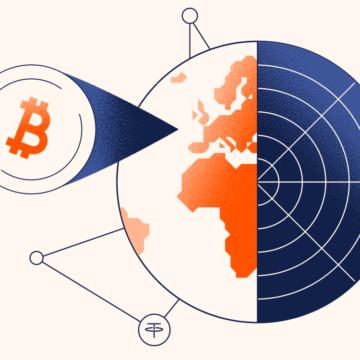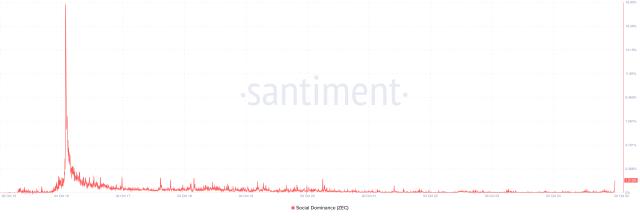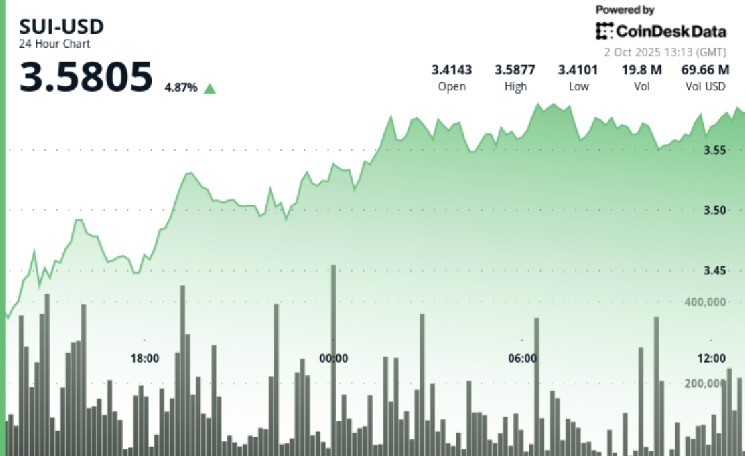This post is an excerpt from our 2025 Geography of Cryptocurrency Report. Reserve your copy now!
Latin America’s expanding crypto footprint
Between July 2022 and June 2025, Latin America recorded nearly $1.5 trillion in cryptocurrency transaction volume, establishing the region as one of the most dynamic in the world. The trajectory has been volatile but unmistakably upward: from $20.8 billion in crypto transaction volume in July 2022, activity surged to a record $87.7 billion in December 2024, with multiple months in late 2024 and early 2025 sustaining levels above $60 billion.
Key growth phases included:
- November 2022 and March 2023, when monthly totals jumped above $34 billion and $37 billion, respectively.
- Late 2023, which delivered a string of record highs, including $46.3 billion in November and $45.1 billion in December.
- 2024 year-end, when volumes more than doubled over the previous year’s peak, culminating in the $87.7 billion December high.
While volumes cooled slightly in the first half of 2025, with figures moderating to $47.9 billion by June, the region remains on a significantly higher baseline than in 2022 or 2023, highlighting enduring momentum behind crypto adoption despite short-term volatility.
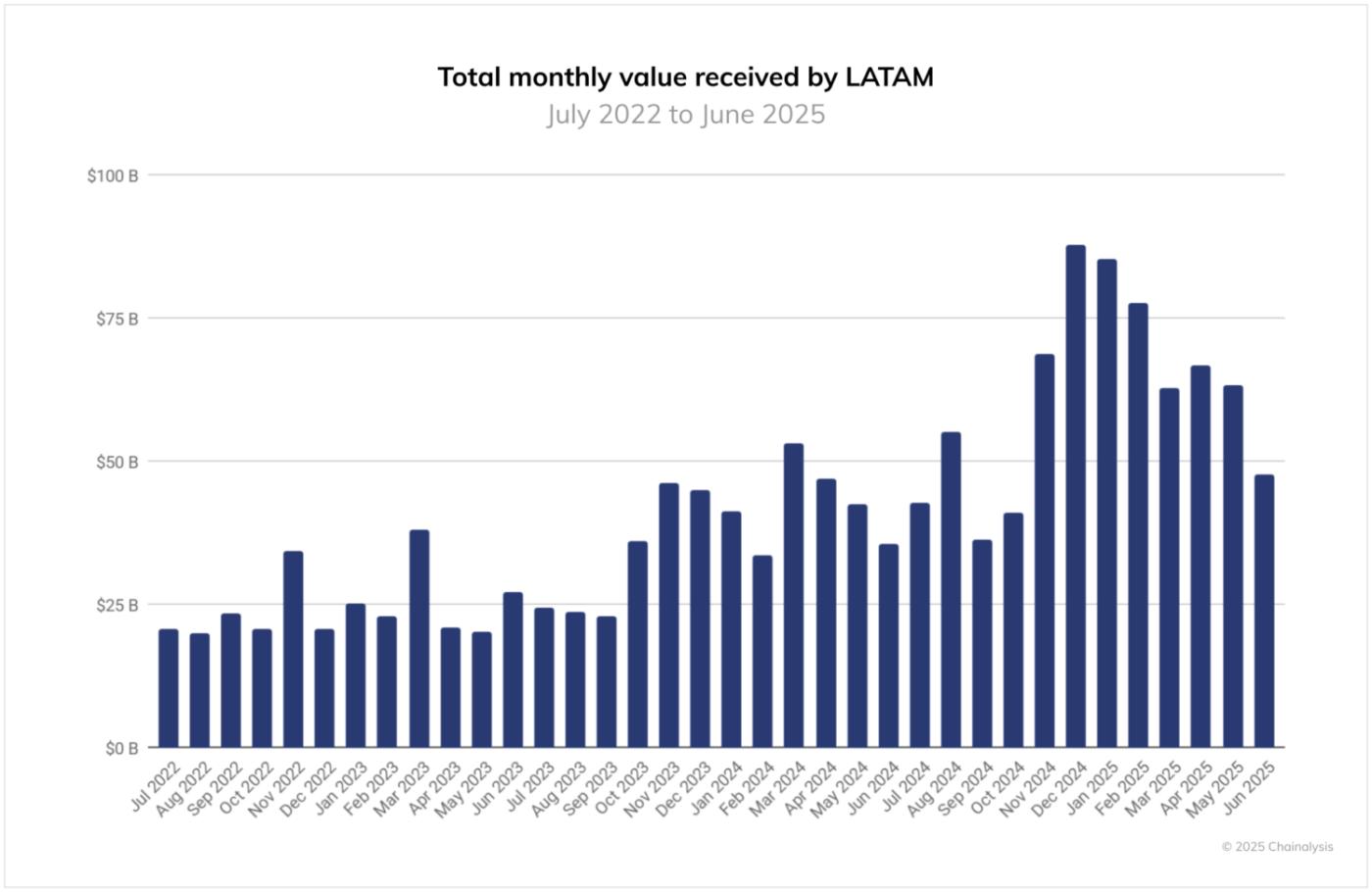
This trajectory reflects not only industry-wide growth in crypto adoption globally, but also Latin America’s unique economic context. As we have noted in previous years, the trifecta of persistent inflation, currency volatility, and restrictive capital controls across several countries in the region continues to drive demand for stablecoins as a safe store of value and as a hedge against local macroeconomic risk. At the same time, the region’s position as a top remittance corridor has accelerated the demand for crypto to facilitate faster and cheaper cross-border transfers. Taken together, these forces help explain why Latin America continues to surge forward in global crypto adoption.
Brazil leads the LATAM region
At the country level, Brazil dominates the region with $318.8 billion in crypto value received, accounting for nearly one-third of all LATAM crypto activity. This likely reflects the country’s deepening institutional participation and retail adoption, with crypto increasingly integrated into payments and investments, as well as its regulatory and market milestones.
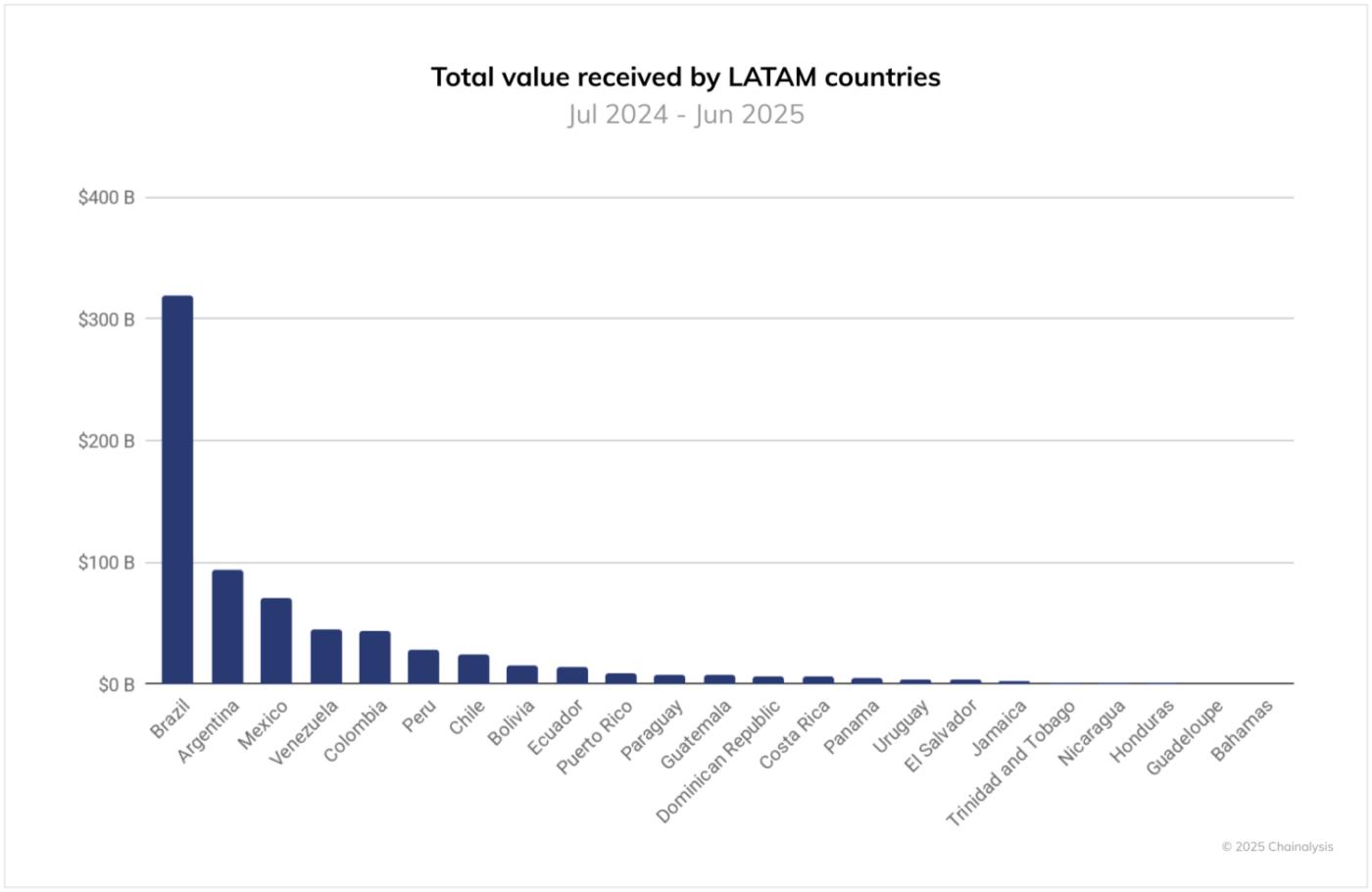
While crypto policy and regulation in LATAM tend to lag behind adoption, Brazil is one of several countries that have already implemented meaningful crypto regulations, including its 2022/2023 Brazilian Virtual Assets Law (BVAL), which set requirements for crypto firms (including KYC and transaction reporting) and established the Banco de Brasil (BCB) as the relevant AML/CFT authority. In Brazil, there is still enthusiasm to progress further, suggesting that momentum will continue at pace with the release of a series of consultations (Nos. 109, 110, and 111/2024), from which rules are expected by the end of 2025.
Stablecoin usage surged significantly, with officials reporting that over 90% of Brazilian crypto flows are now stablecoin-related, underscoring their crucial role in payments and cross-border transfers. While USD-backed stablecoins maintain market dominance, local stablecoins are also gaining traction. This flourishing stablecoin market, combined with increasing transaction volumes, cements Brazil’s position as a regional growth hub. Institutional engagement with crypto, which we’ve tracked in previous years, remains a vital driver of this growth. The BCB’s past regulatory decisions have largely focused on encouraging institutional participation, leading traditional banks like Itau and neobanks such as Mercado Pago and Nubank to enter the space, creating a dynamic ecosystem for larger institutions. As we move toward a more regulated environment by the end of 2025, we expect Brazil to maintain its central position, building on strong institutional interest. This trajectory depends on striking the right regulatory balance to ensure retail activity remains safe, well-supported, and attractive to participants.
The wider LATAM crypto ecosystem
Argentina ranks second with $93.9 billion in transaction volume, which is consistent with the trend observed in our Adoption Index for the previous year. It appears that this adoption continues to be driven by stablecoin usage as households and businesses hedge against chronic inflation and capital controls. Mexico ($71.2 billion), Venezuela ($44.6 billion), and Colombia ($44.2 billion) round out the top five.
Smaller markets such as Peru ($28.0 billion), Chile ($23.8 billion), and Bolivia ($14.8 billion) also play meaningful roles, while El Salvador, despite its well-known fondness for bitcoin, contributed more modest volumes ($3.5 billion).
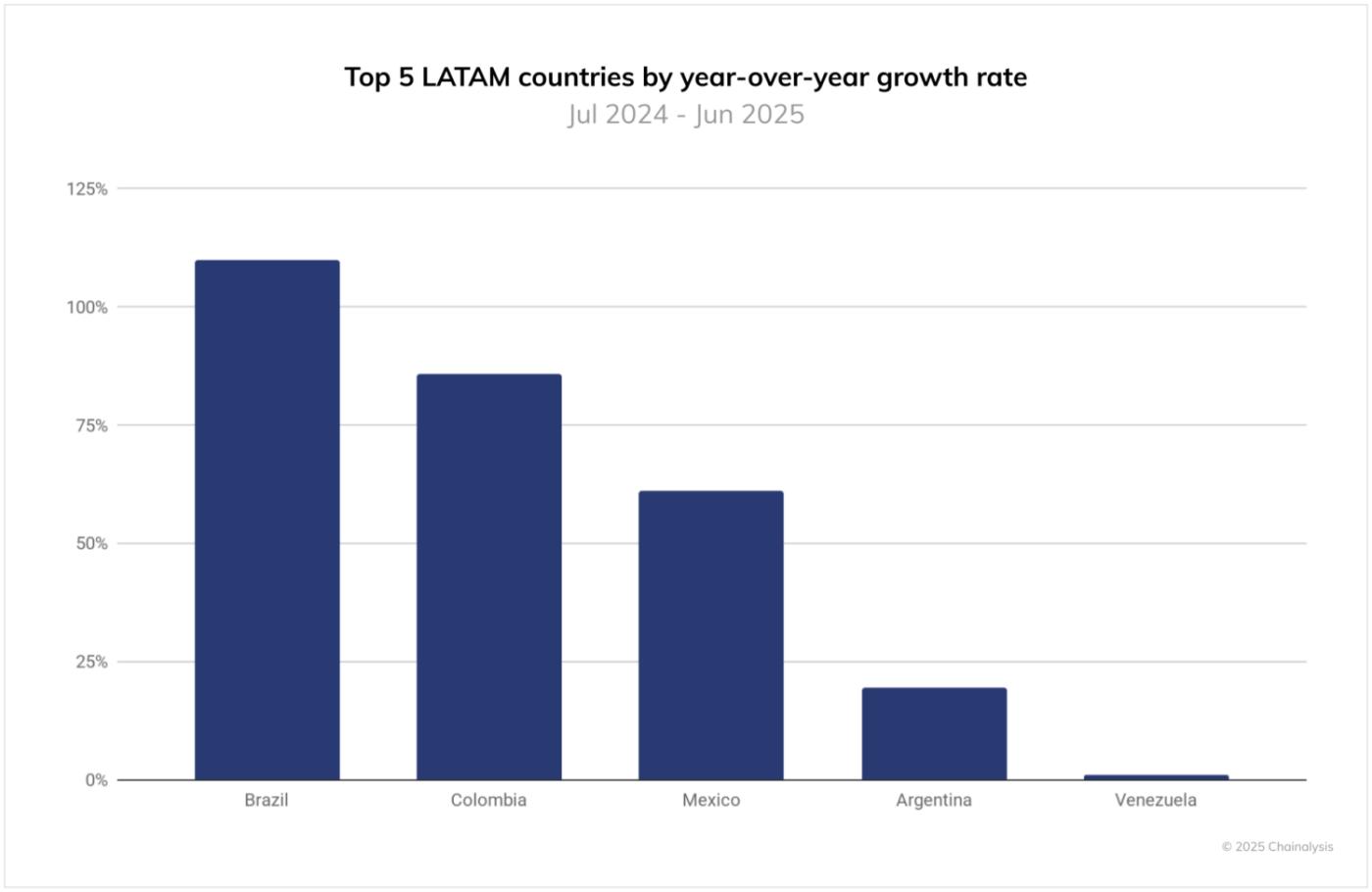
Not only is Brazil the largest crypto market in Latin America, but it’s also one of the fastest-growing, with fiat purchases of cryptocurrency showing expansion over the past year. This contrasts with Argentina and Colombia, where activity has been more volatile, while Mexico remains comparatively stable.
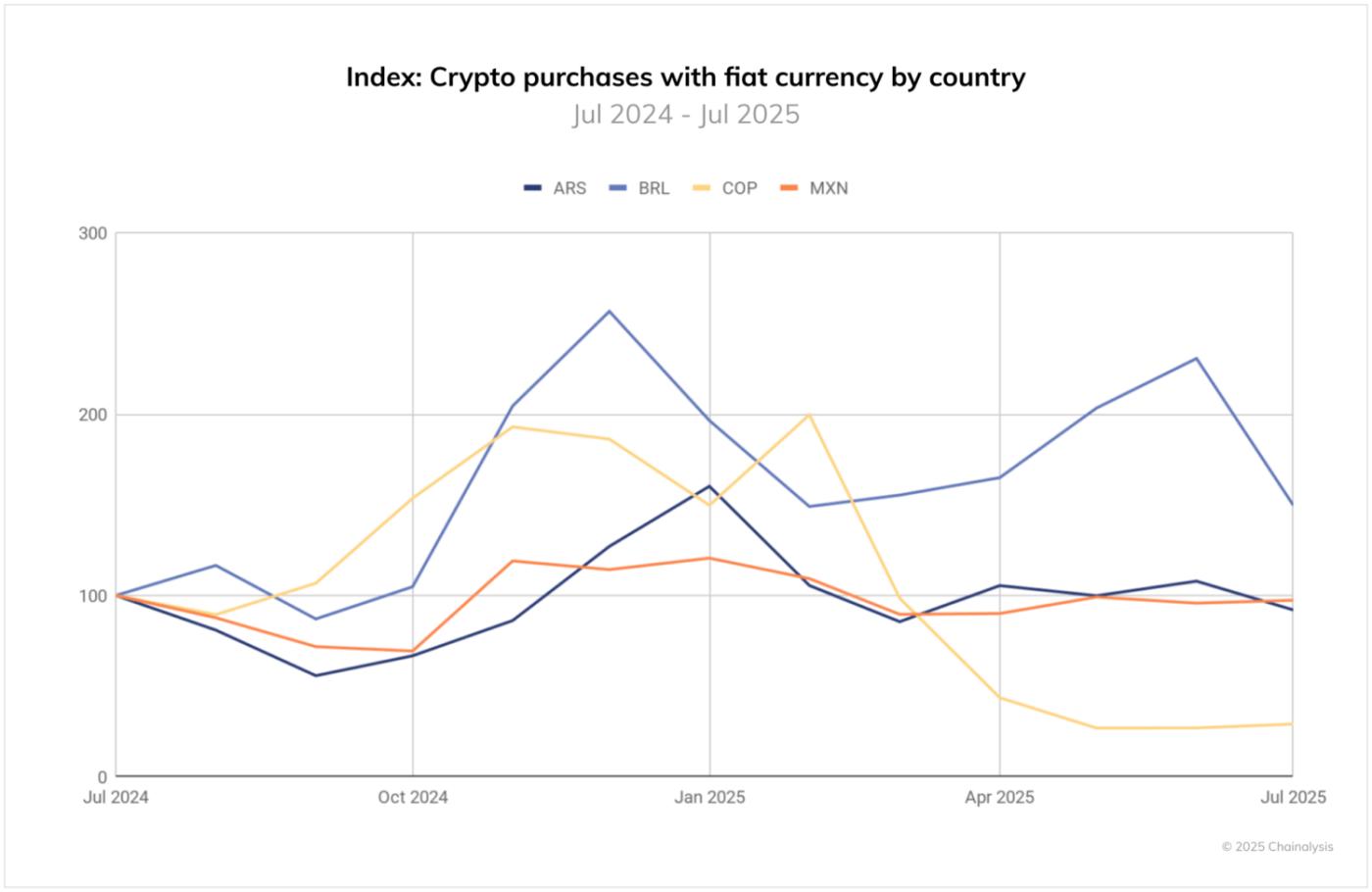
Of the top 15 fiat currencies used to purchase stablecoins on centralized exchanges, two from Latin America sit at the very top — the Colombian peso (99%) and Argentine peso (89%) — while Brazil (37%) and Mexico (17%) also rank within the top 15. This suggests that nearly all activity on CEXs in Colombia and Argentina is directed toward stablecoin acquisition. The dominance of stablecoins in Latin America reflects persistent inflation, currency volatility, and capital controls, which drive households and businesses to seek U.S. dollar-linked stability for savings, remittances, and commerce. In effect, stablecoins serve as a parallel financial system, offering both a hedge and a practical payments tool where local currencies often fail to provide stability.
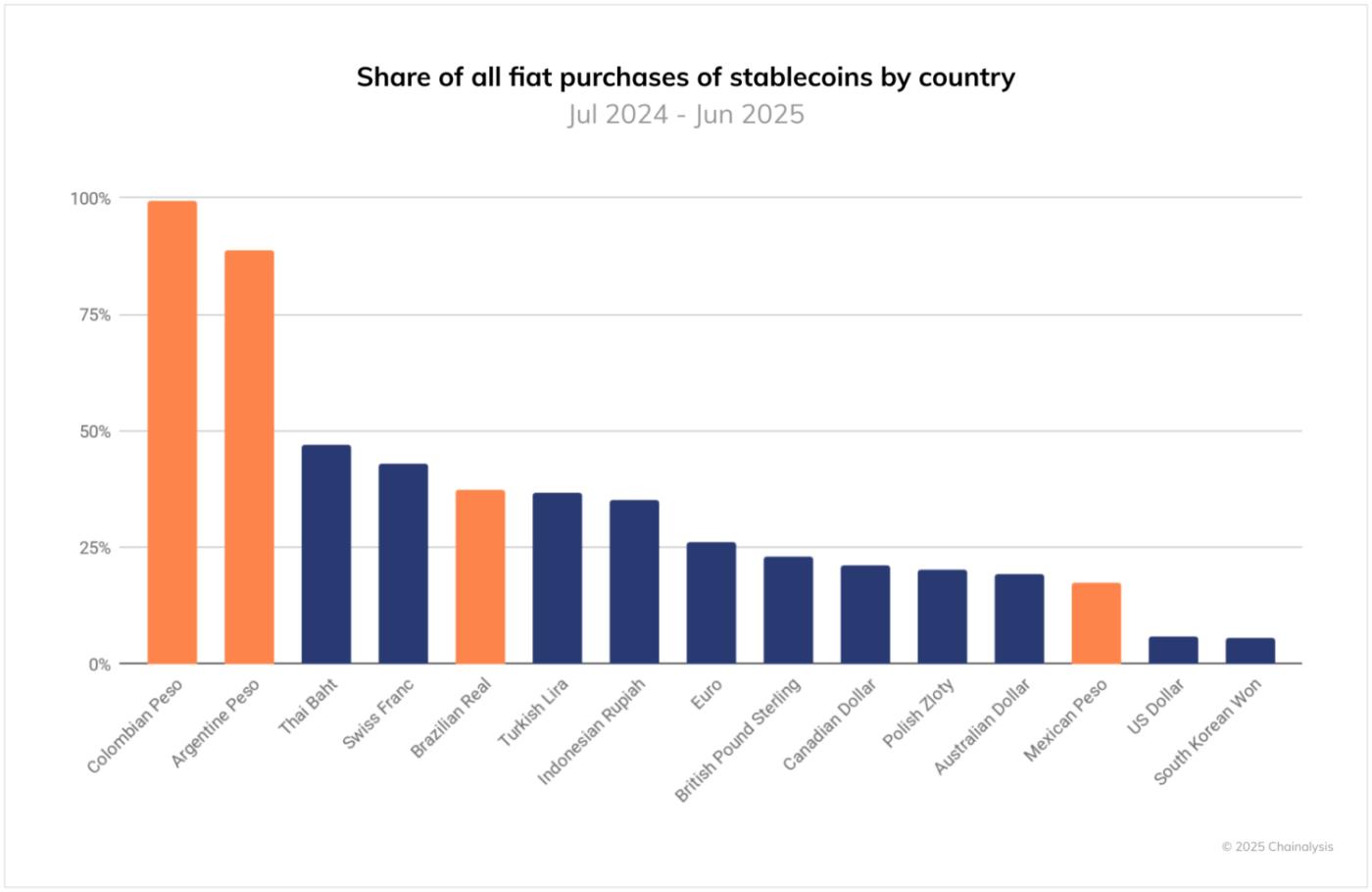
Centralized exchanges remain the dominant entry point for crypto across most regions, but Latin America stands out with 64% of activity taking place on CEXs, second only to the MENA region (66%) and significantly higher than both North America (49%) and Europe (53%). This reliance on centralized platforms reflects both accessibility and trust: for many users in the region, exchanges offer the most straightforward way to acquire cryptocurrency, trade crypto, and move money across borders. Prominent local platforms such as Mercado Bitcoin (Brazil), Ripio (Argentina), Bitso (Mexico and Colombia), and SatoshiTango (Argentina) have become household names, building strong user bases by offering fiat on-ramps, remittance services, and integrations with local payment systems. These exchanges bridge the gap between volatile local currencies and dollar-linked digital assets, helping explain why centralized platforms command such a large share of Latin America’s crypto activity.
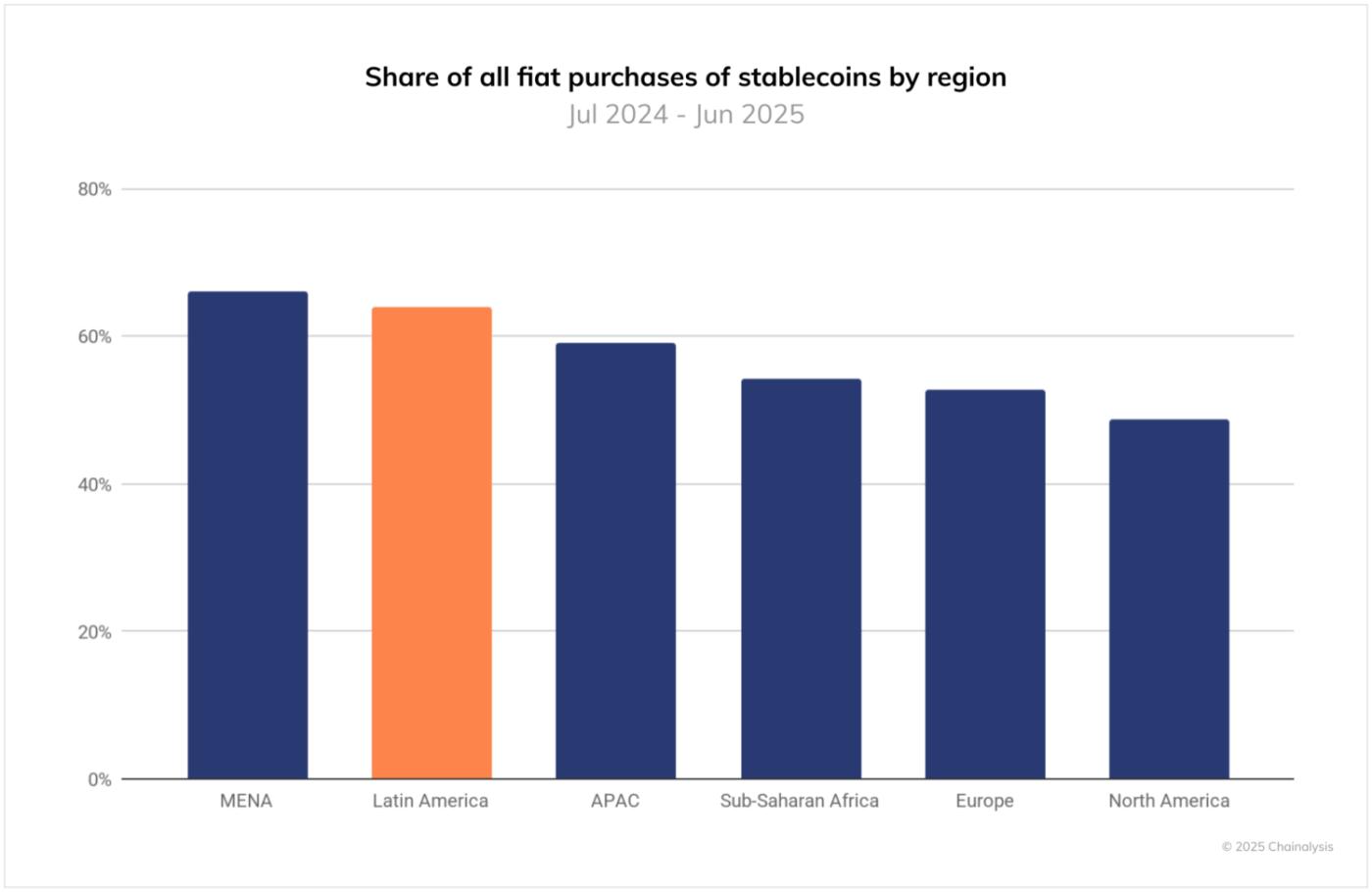
This website contains links to third-party sites that are not under the control of Chainalysis, Inc. or its affiliates (collectively “Chainalysis”). Access to such information does not imply association with, endorsement of, approval of, or recommendation by Chainalysis of the site or its operators, and Chainalysis is not responsible for the products, services, or other content hosted therein.
This material is for informational purposes only, and is not intended to provide legal, tax, financial, or investment advice. Recipients should consult their own advisors before making these types of decisions. Chainalysis has no responsibility or liability for any decision made or any other acts or omissions in connection with Recipient’s use of this material.
Chainalysis does not guarantee or warrant the accuracy, completeness, timeliness, suitability or validity of the information in this report and will not be responsible for any claim attributable to errors, omissions, or other inaccuracies of any part of such material.
The post Latin America Emerges as a Crypto Powerhouse Amid Volatile Growth appeared first on Chainalysis.


